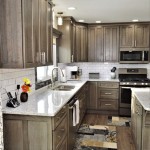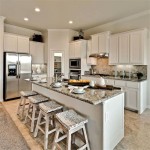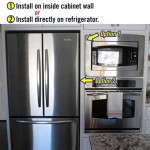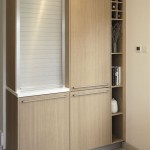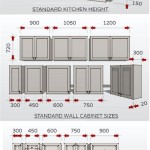Kitchen Cabinet Doors: A Comprehensive Guide to Building Your Own
Kitchen cabinet doors are an essential component of any kitchen, providing both functionality and style. Whether you are remodeling your existing kitchen or building a new one from scratch, choosing the right cabinet doors is crucial. In this article, we will cover the essential aspects of kitchen cabinet doors, from design considerations to materials and construction techniques.
Design Considerations
When designing your kitchen cabinet doors, there are several key factors to consider:
- Style: Cabinet doors come in a wide range of styles, from traditional to modern. Choose a style that complements the overall design of your kitchen.
- Finish: The finish of your cabinet doors can greatly impact the look and feel of your kitchen. Options include paint, stain, laminate, and veneer.
- Door Profile: The door profile refers to the shape of the door. Common profiles include raised panel, flat panel, and beadboard.
- Hardware: Knobs and pulls are an important part of the overall design. Choose hardware that complements the style of your cabinet doors.
Materials
Kitchen cabinet doors can be made from various materials, each with its own unique properties.
- Wood: Wood is a popular choice for cabinet doors, offering both durability and aesthetic appeal. Common wood species used for cabinet doors include oak, maple, cherry, and mahogany.
- Laminate: Laminate is a durable and affordable material that is resistant to scratches and stains. It comes in a wide range of colors and patterns.
- Thermofoil: Thermofoil is a type of vinyl that is heat-applied to MDF or particle board. It is a durable and low-maintenance option.
- Acrylic: Acrylic is a high-gloss material that is resistant to scratches and stains. It is available in a variety of colors and can create a modern look.
Construction Techniques
There are two main construction techniques used for kitchen cabinet doors:
- Mortise and Tenon: This traditional method involves creating mortises (holes) in the stiles (vertical sides) and tenons (projections) on the rails (horizontal pieces). The tenons are then inserted into the mortises and glued together.
- Dowel Joint: This method uses dowels (cylindrical pins) to connect the stiles and rails. Holes are drilled into the stiles and rails, and dowels are inserted and glued.
Installing Cabinet Doors
Once your cabinet doors are built, you will need to install them on the cabinets. Here are the steps involved:
- Attach Hinges: Hinges are used to connect the cabinet doors to the cabinets. Attach the hinges to the doors and the cabinet frames using screws.
- Align Doors: Once the hinges are attached, align the doors to ensure they are level and evenly spaced. Use shims or spacers to adjust the alignment as needed.
- Adjust Hinges: Once the doors are aligned, adjust the hinges to ensure they open and close smoothly. You may need to adjust the hinges' tension or position.
- Install Handles: The final step is to install the knobs or pulls on the cabinet doors. Use the appropriate hardware for your chosen door style and finish.

3 Ways To Diy Cabinet Doors From Beginner Pro

How To Make Diy Cabinet Doors Without Fancy Router Bits

Diy Rustic Industrial Cabinet Doors Tutorial Cherished Bliss

Mudroom Update Diy Shaker Cabinet Doors Faux Remodelando La Casa

How To Make Diy Cabinet Doors Without Fancy Router Bits

Diy Inset Cabinet Doors A Beginner S Way Remodelando La Casa

How To Make Diy Cabinet Doors Without Fancy Router Bits

How To Make Diy Cabinet Doors

How To Make Your Own Cabinet Doors Beneath My Heart

Kitchen Cabinet Doors Ana White


